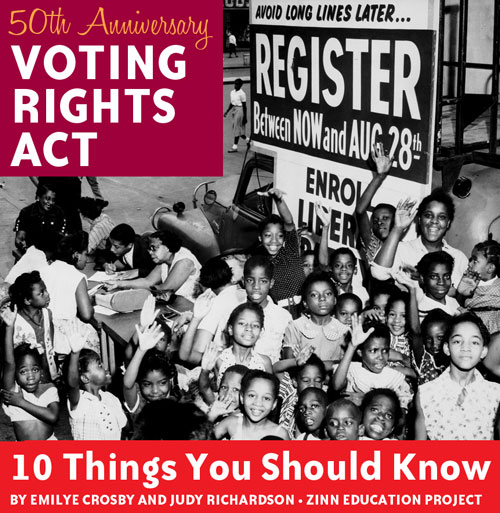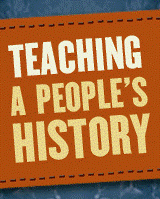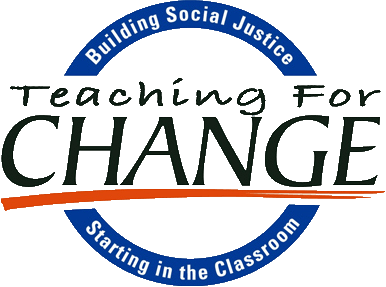|
|
|
Zinn Education Project News
|
|
| | Coretta Scott King (R) with Women Strike for Peace founder Dagmar Wilson (L), U.N. Plaza, New York, Nov. 1, 1963. |
By Vincent Intondi
This week we commemorate the 70th anniversaries of the atomic bombings of Hiroshima and Nagasaki (August 6 and 9, 1945). August 6 also marks the 50th anniversary of the Voting Rights Act of 1965. Soon, students will return to school and to their history textbooks. However, most will not learn how these issues are connected. They will not learn of all those in the Civil Rights Movement who simultaneously fought for peace. But this must change, and soon. The scarring of war and poverty and racism that Malcolm X spoke of continues. It's time that students learn about the long history of activism that has challenged these deadly triplets. Continue reading.
_____________________________________________________________
"W. E. B. Du Bois to Malcolm X: The Untold History of the Movement to Ban the Bomb" is the newest article in the Zinn Education Project series, If We Knew Our History,
posted on Common Dreams and Huffington Post. You can help us reach a wider audience in three steps: Promote people's history today!
|
Related Resources
|

|
Teaching Activity. By Wayne Au. Lesson for high school students on the bombing of Hiroshima using the film Barefoot Gen and haiku. Read more.
| 
|
Teaching Activity with Film Review. By Moé Yonamine. ANPO is a documentary about visual resistance to U.S. military bases in Japan by Japan's foremost contemporary artists. Read more.
| 
|
Book - Non-fiction. By Vincent Intondi. History of Black activists who fought for nuclear disarmament. Read more.
| 
|
Book - Non-fiction. By Howard Zinn. Personal reflections and political analysis on the WWII bombing of Hiroshima, Nagasaki, Royan, and more. Read more.
|
|
50th Anniversary of the Voting Rights Act
|
 The Voting Rights Act: Ten Things You Should Know The Voting Rights Act: Ten Things You Should Know
By Emilye Crosby and Judy Richardson
The Voting Rights Act (VRA), signed into law on Aug. 6, 1965, was a victory for the Civil Rights Movement, southern African Americans, and American democracy. It outlawed strategies that had been used by white supremacists to disenfranchise Black citizens and included provisions to facilitate the registration of new voters. Together with the Civil Rights Act of 1964, the Voting Rights Act ended most legal forms of white supremacy. Although this was important, it did not end all forms of racial discrimination, many of which were ---- and are ---- embedded in the structures of our society. Continue reading.
|
Related Resources
|

|
Teaching Activity. Teaching for Change. Introductory lesson on key people and events in the long history of the Selma freedom movement. Read more. | 
|
Website. Historical materials, profiles, timeline, map, and stories on SNCC's voting rights organizing. Read more.
|
|
|
|
"I am an activist----as much as I can be one at my ripe age of 84 years---- and I'm interested in improving the education of the students. I don't think we have done right by them, now or in the past; too many lies, outright and by omission." ----Charles Philp, New York, NY
Join Charles and other monthly donors to bring people's history to the classroom. Sign up today!
|
|
|
|
|
 |
The goal of the Zinn Education Project is to introduce students to a more accurate, complex, and engaging understanding of United States history.
| |
|
|
|
| |
|
|
© 2015 The Zinn Education Project, a collaboration of
|  |
and
|  |
.
|
|
|
|
|